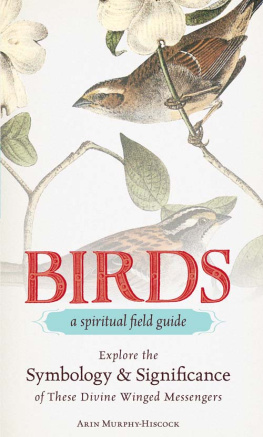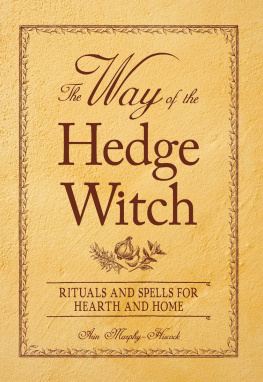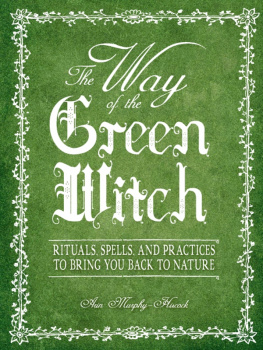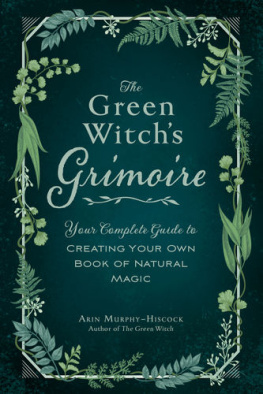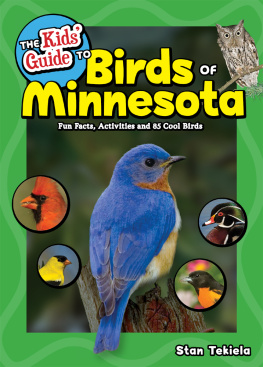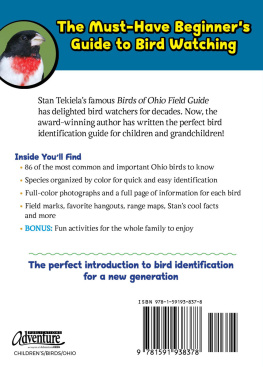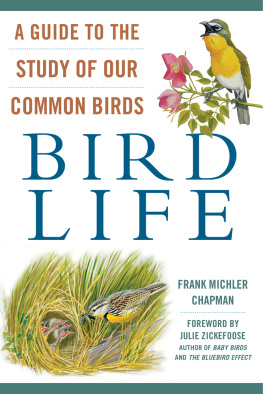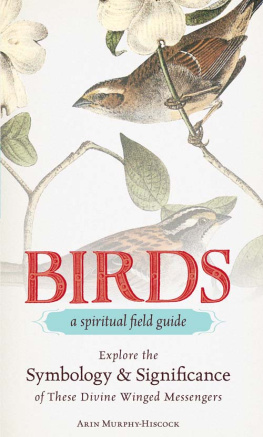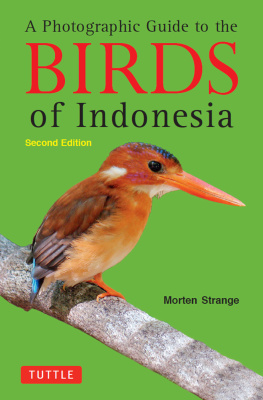BIRDS
a spiritual field guide
Explore the Symbology & Significance of These Divine Winged Messengers
Arin Murphy-Hiscock
Avon, Massachusetts
For our own tiny Owlet.
Acknowledgments
As always, my work would be the poorer without the wonderful staff at Adams. My gratitude specifically goes out to Andrea Hakanson, who contacted me and said, What do you think about a book that explores the symbolism and spiritual significance of birds? Heartfelt thanks and appreciation also go out to Katie Corcoran Lytle, and to my nameless copyeditors, designers, and proofreaders, who polish my words and present them so beautifully.
As always, my love to my husband and son, who not only make sure I take breaks and eat, but who put up with me spontaneously sharing interesting facts about the birds in our neighborhood at odd times. Love also goes to our little girl, who kept me company pretty much from the moment I signed the contracts. And I would be amiss in not singling Ceri out for thanks for keeping me sane through the writing process by providing support via e-mail, the occasional celebratory chocolate, and endless cups of tea and snuggles with her daughter Ada when needed.
Contents
Introduction
Birds soar above us, serving as a link between our earthbound lives and the glorious mystery of the beyond. They inspire us to look up, to reach out, to yearn for more. That may sound like a recipe for disgruntlement with ones lot in life, but its far from it. As we look beyond our daily grind, we strive to accomplish more and to better ourselves in ways we may not otherwise have considered. But birds do more than just speak to our souls. They are creatures of the air, the element which Western culture usually associates with the mind and thus the powers of thought, wisdom, knowledge, and intuition. Its no wonder, then, that for centuries humans have, subconsciously or otherwise, felt drawn to birds and viewed them as messengers or representatives of some kind of mystical communication.
We keep birds as pets, to enjoy their beauty and songs. We keep birds as livestock, to partake of their nourishment. We draw and paint birds, using them as symbols for innumerable virtues. We celebrate their songs in our music. Truly, birds are a magical and omnipresent part of our lives, and because we see them so frequently in our environments, we are drawn to observe them and to make something of their presence.
What does it mean to see a cardinal when youre on your way to the bus stop, or to witness a blue jay eating spiders in the cedar hedge? When a hawk soars across the highway, what significance might it have? Read on to learn the history of our winged messengers, how to interpret their signs, and how you can use them to divine the secrets of your own life.
How to Use This Book
The majority of references in this book pertain to birds found wild in North Americaalso referred to as the New World in the entriesalthough mythology associated with European / Old World species and birds found only in other parts of the world are also included. That means you wont find penguins, ostriches, nightingales, or even chickens described herein. Instead, youll read about birds that youre more likely to see in the woods, a park, or your own neighborhood; this gives their divinatory meanings immediacy and vitality. In general, the species and geographic distribution information will be primarily North American, for the use of the books primary audience.
Its important to note that this is not a scientific field guide, nor is it designed to be. If you really need to identify a bird, please use a proper field guide such as Peterson Field Guide to Birds of North America, The National Audubon Society Field Guide to North American Birds, or other such reference book. You can even get apps for your smartphone to help you identify birds when youre on the go, such as the Audubon Birds regional apps or the Peterson Birds of North America app.
This book focuses on the inspiration, spiritual significance, folklore, symbolism, and divinatory meaning associated with different birds. To help you understand what the bird youve seen is trying to tell you, each bird entry includes the following information:
Name information: This can include the species name, the order and family if necessary to clarify, and / or a common name. Throughout this book, rather than going into detail about all the different species within a genus, youll find one overall entry for most birds (for example, the owl) and within that, anything specific associated with one particular species (barn owl, great horned owl, etc.) will be addressed. However, there isnt a specific way to determine the spiritual significance of an ornithological subspecies and its not going to make a deep impact on the symbolism if the blackbird you see is a European blackbird or an American blackbird.
But whats the difference between all these classifications? They provide different levels of specificity in the taxonomic classification of living creatures and various organisms. There are eight in total, but I refer to four at various times in the entries on each bird, depending on how specific the entry is:
- Species: The most specific classification, applied only to one kind of bird within a greater genus.
- Genus: A group of organisms or creatures that share certain qualities, values, or natural characteristics, within a larger family.
- Family: A group of related organisms or creatures that share certain qualities, values, or natural characteristics, within a larger order.
- Order: A group of related organisms or creatures grouped according to how they share certain qualities, values, or natural characteristics.
Basically, an order is the most general grouping; the family has a more specific set of things in common; the genus is determined by yet another more specific set of common characteristics; and the species is the most precise way to differentiate an individual kind of bird.
Popular and common variants / subspecies / other names: This list cannot be exhaustive, of course, and will only refer to common subspecies or associated species. Youll find that some subspecies or variants have been pointed out for the sake of interest, but this information doesnt affect the symbolism that youll take from your encounter.
Geographic distribution: This indicates where the bird can mostly be found, in North America and worldwide.
Environment: This explains the kind of surroundings or habitat where the bird is most likely to be found.
Physical description: This describes what the bird looks like. Note: The measurements given in this book are rough averages, usually between the male and female of the species.
Interesting facts: Again, this cannot be exhaustive; this is a selection of facts about the birds call, mating habits, and behavior pertinent to its symbolic meaning.
Myths, folklore, and cultural associations: This is a series of references to the birds appearances in cultural myths, popular culture, and legend. Its important to understand that a lot of folklore is vague and doesnt necessarily have an identifiable source; like an old wives tale, something can be part of the general body of lore belonging to a bird and familiar or important to people, and yet not be traceable. If a piece of folklore has an identifiable provenance such as a geographic cultural source, it has been included; otherwise, it is noted as a legend.

